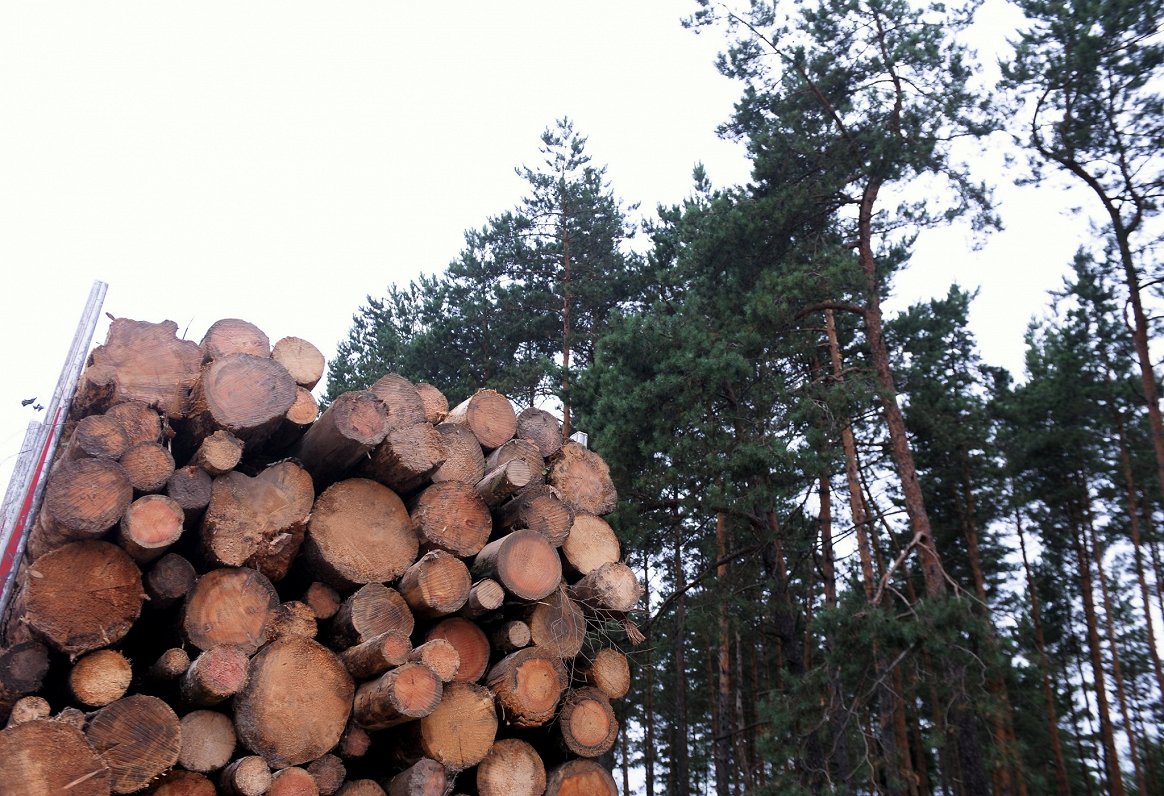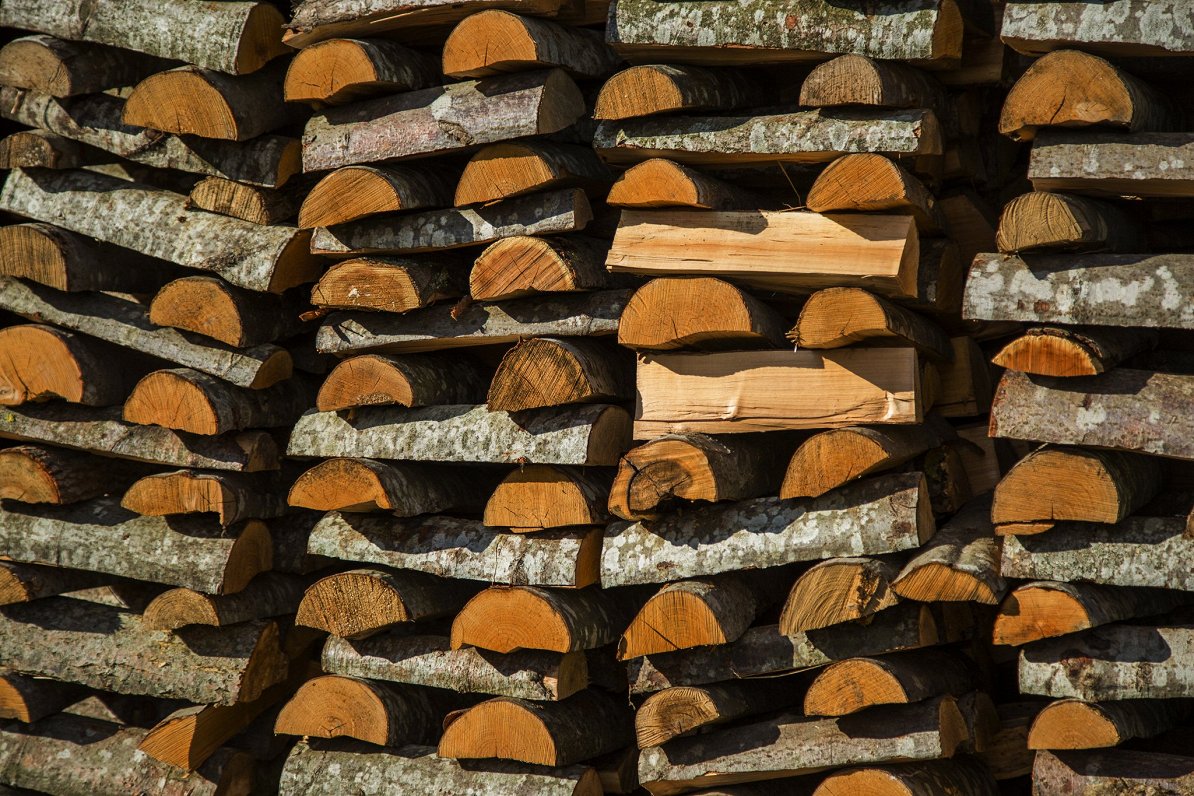He pointed out that Russia’s war in Ukraine has forced Europe to reassess its current policy and international relations. Especially in terms of such strategic aspects as security, supply, communications, and energy independence. It is worth noting that in late April 2022, Baltic forest owners’ organisations signed a joint letter by the European forest owners and sent it to the leaders of the European Union, Ursula von der Leyen and Frans Timmermans, about the need to build European security and supply using local renewable resources instead of Russian gas.
More than 1 million TJ
Mužnieks explained what he said with the fact that more than half of Latvia is covered by forests, and that the forested area in the country continues to grow. According to research by the Latvian State Forest Research Institute ‘Silava’, the amount of energy that can be obtained from the least valuable grades of wood and residual wood produced by felling is estimated at 1.05–1.15 million terajoules (TJ), which does not include the amount of energy that could be obtained from wood located outside forests, such as overgrown ditches and infrastructure sites.
Currently, Latvia also has a huge amount of stands with overage trees of low-value species. For example, there are about 23 million cubic metres of wood in adult and overage grey alder stands. “We have the resources, we just need the will to become independent, by using our local renewable resources,” A. Muižnieks said.
It should be noted that the forest area in Latvia has doubled compared to just 20 years ago, and the amount of timber growing in forests has tripled. Also, wood is a climateneutral material: its use for producing energy does not contradict climate goals, as it replaces fossil fuels.
In summer, the government introduced forestry changes aimed at bringing the conditions for forest management more in line with the regulations for harvesting timber adopted in the region, as well as creating climate-resistant forest stands in the future. For the felling of trees, the amendments envisage reducing the lowest permissible felling diameter of trees by a few centimetres, bringing this indicator closer to the Estonian standard.

For better climate resilience, forest owners will be required to restore felled forest using high-quality planting material. In terms of natural diversity, an average of 8 snag trees will have to be left when felling, instead of the previous 5 snags. This incentivises forest owners who purposefully grow lumber as a renewable resource, and are given the opportunity to reach their goal faster by contributing to the production of renewable raw materials, which is essential to abandon fossil raw materials.
Notably, in Finland there is no restriction on felling diameter or age, but only the basic condition that the areas must be restored. Sweden also has no restriction on the diameter of felling, and trees may be cut at the age of 45, 50, 60, 65, 70, 80, 90 years, depending on the growing conditions. Meanwhile, in Estonia, the cutting diameter for pine is 28 cm, for spruce it is 26 cm, 22–26 cm for birch, and now, without age restrictions, the cutting diameter in Latvia will also be set at 30 cm for pine, 26 cm for spruce, and 25 cm for birch.
“This makes it possible to increase the availability of wood in two ways. First, by providing firewood, as Latvian heat supply companies transition from natural gas to biofuel. Second, it could at least partially compensate for the import of lumber and lumber products from Russia and Belarus, which has stopped due to sanctions related to Russia’s invasion of Ukraine,” Kristaps Klauss, executive director of the Latvian Forest Industry Federation, explained.
He predicted that with the termination of woodchip imports from Russia and Belarus, these will be replaced by local resources and thus the amount of wood chips exported will decrease. Meanwhile, in the 2023/2024 heating season, many Latvian heating supply utilities will switch from gas to wood chips. This is evidenced by the projects they have applied for, with a capacity of ~270 MW.
Questions from neighbors
Muižnieks admitted that very high prices of firewood are a good incentive for forest owners to fell and process the forest stands of low-demand trees, such as grey alder or overgrown aspen that is not useful for anything but firewood. However, forest owners may face the problem of doing the logging. According to information available to Muižnieks, discussions are taking place in Lithuania about how to get a sufficient supply of biomass for energy from their own forests.
In Lithuania, approximately 80% of central heating is based on wood, but until recently almost half of the necessary biofuel (woodchips) — about 2 million m3 — was imported from Belarus, which is currently impossible.
The situation is different in Estonia, which has been increasing the use of biomass in centralised heating every year, and now 60% of central heating uses wood (mainly biomass). According to A. Muižnieks, owners
of private forests could make more use of insufficiently developed alder stands, using them to replace natural gas in heating. Replacing gas with wood would mean an annual felling increase of less than 5%. In Estonia, firewood is not considered a quick solution to replace Russian gas, and gas cannot be easily replaced by wood in a gas boiler. It requires a major reconstruction. Since Estonia has its own fossil fuel — oil shale — our northern neighbors can use oil produced from it.
Gas boilers require only minor adjustments to replace gas with shale oil. Although firewood is not a quick solution, it will indeed strengthen its position in the energy sector in the long run. In Estonia, there is also an assistance measure for local boiler houses switching from fossil fuels to renewables starting from autumn. But it will only yield results in several years. Muižnieks also emphasised that the forest sector in Latvia can replace natural gas, but it cannot be implemented due to EU requirements, which stipulate that at least 10% of the country’s territory must be fully protected (without any business activity) and another 30% of it must
be protected through certain business restrictions, which also affects the harvesting of lumber.
This feature is reproduced by kind permission of the German-Baltic Chamber of Commerce in Estonia, Latvia and Lithuania. You can see the official website and find out more about the Baltic Business Quarterly magazine here: https://www.ahk-balt.org/lv/publikacijas/zurnals.






























